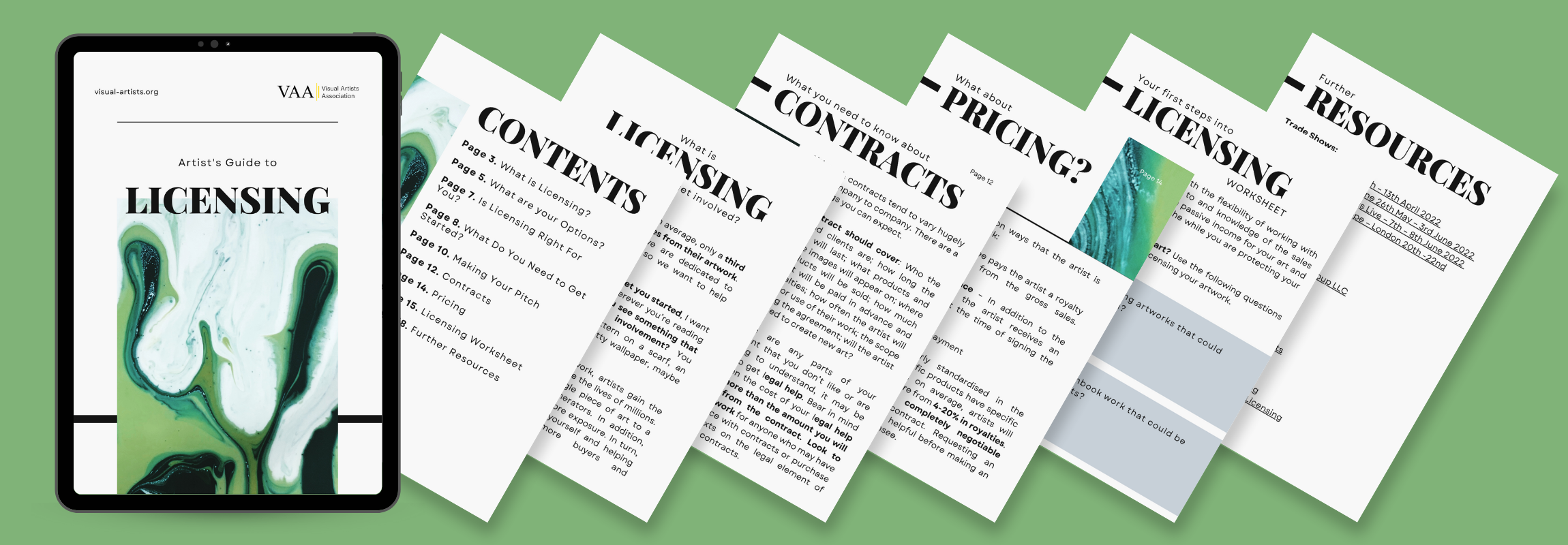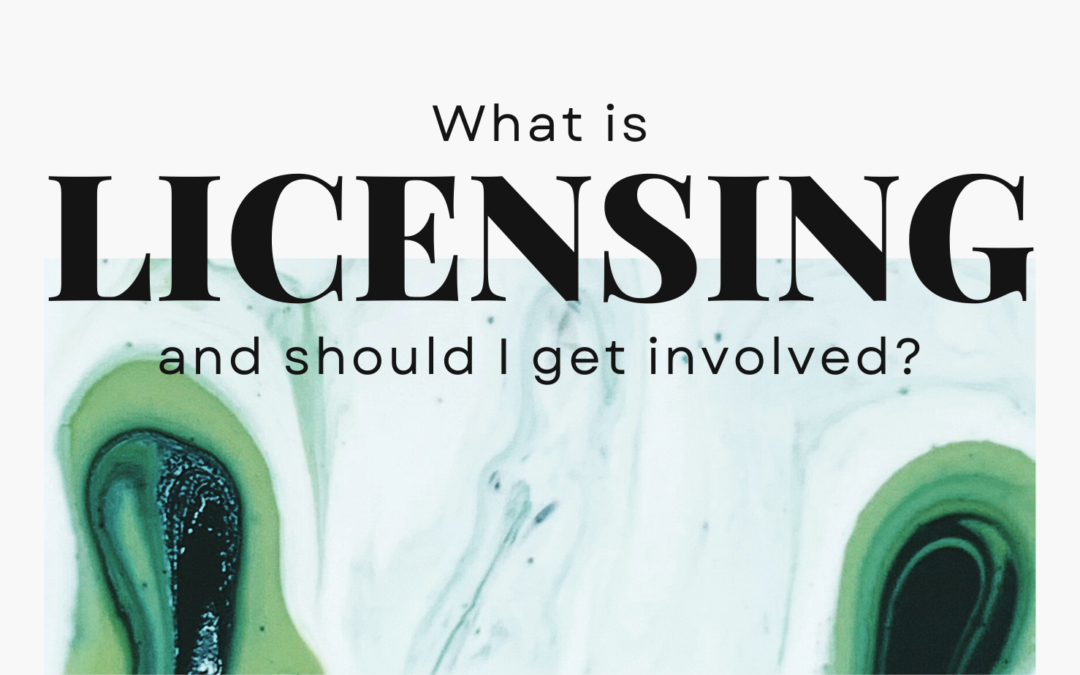What is Artwork Licensing and should you get involved?
Research shows that on average, only a third of artists’ income comes from their artwork. As an organisation, we are dedicated to helping artists thrive, so we want to help change that statistic.
As a quick activity to get you started, look around wherever you’re reading this right now. Can you see something that has had an artist’s involvement? You probably can, the pattern on a scarf, an image on a mug, a pretty wallpaper, maybe even a book cover? By licensing their artwork, artists gain the opportunity to decorate the lives of millions. Licensing opens a single piece of art to a variety of income generators. In addition, licensing allows you more exposure. In turn, creating a name for yourself and helping your work find more buyers and opportunities.
What does Licensing look like?
Licencing your artwork means that you are permitting someone (an individual, company, or organisation) to use your work commercially. Some artists cringe at the idea of ‘commercial work’. The commercial world of art doesn’t need to be scary. A licence provides you control over how your work is seen and used.
When you give your permission, your art can only be used within the guidelines that you have specified. This includes the time period, the way your art is used, and what purpose it is being used for. That way you can avoid products you think could negatively influence your business.
Your art could be seen on:
- Tote bags
- Placemats
- Wallpaper
- Home Textiles
- Apparel
- Giftware
- Commercial Designs and Advertisements
- etc.
This is an excerpt from our Artists Guide to Licensing. To learn more about Artwork Licensing and how you can get involved, join the VAA to access this and many other guides. Find all of our guides on the Guides and Templates page, make sure to download the Artists Guide to Licensing today.

